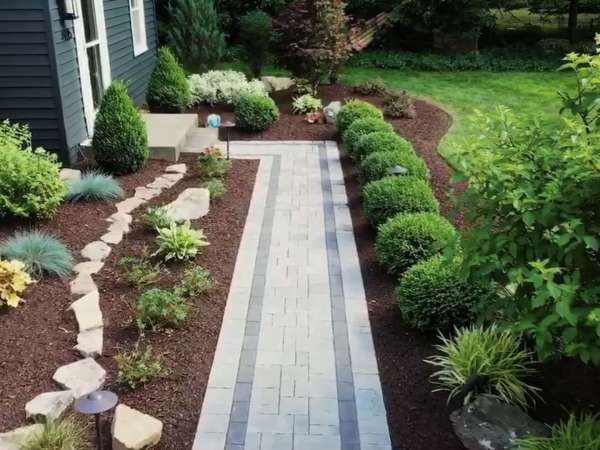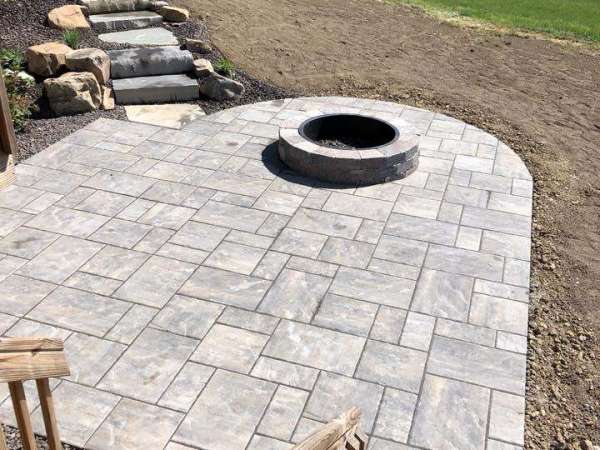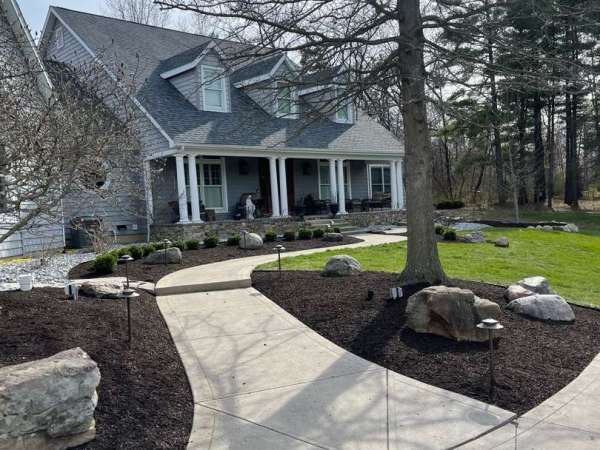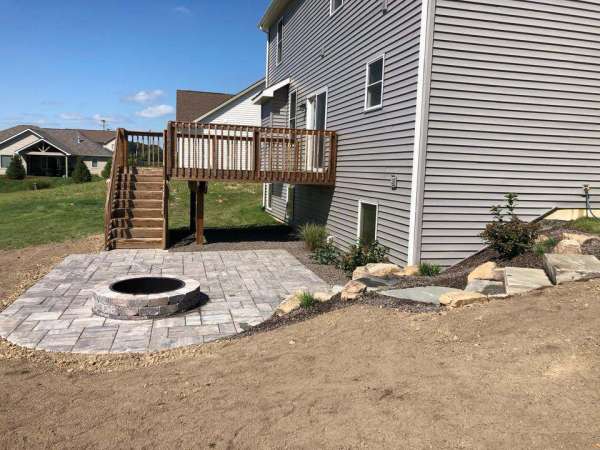
Which Patio Is Best For You
Posted on February 2, 2018
With the warmer weather on its way (for those of us keeping score, there are 53 days until Spring), one question that we have been receiving a lot is, “Which type of patio is the best?” Since there are all different types of homes, and therefore many different sets of requirements for the perfect patio to help accentuate your backyard living space, we took it upon ourselves to give you a few tips and recommendations about which patio is best for you.
There are two main types of patio choices homeowners have; those made with paver stones, and those made with concrete. Sometimes it can be confusing to determine exactly which is which. These days most homeowners are going away from the traditional flat slab and opting to stamp the concrete while it’s wet with a pattern. Despite this, the concrete is still in a flat slab, although it may look otherwise.
So, which one is best? Ultimately, that decision that only you can make, but we at Rowan Landscape & Design would like to give you some insight into both.
Poured concrete slabs are traditionally used for the outdoor residential space because they are cheap, and easy to install for the contractor. Patios that use paver stones, sometimes known as brick stones, use interlocking individual sections that are made from a variety of materials. Some examples of the materials used are natural stone, like limestone and granite, even marble in some instances; also brick (as you might expect, given the name of “brick stones”), and even concrete in some cases can be used.
While the desired outcome of both types of patios, giving the homeowner an outdoor living space that will also add value to the home, are similar; the maintenance, potential problems, and overall aesthetics of each, are very different.
It’s generally known and understood that going with a standard, flat slab of concrete for a patio, is often around 10% cheaper than going with a paver patio. However, if you do end up deciding to go with the much more attractive looking stamped concrete look, you can expect to pay the same, or even more than you would for a paver patio. With so many new homes having the most modern look available, and home improvements being done to improve the look and value of a home, going with a simple flat slab may be cheap, but not very helpful for the improvement of the overall look of the home.
Another issue that people experience with installing concrete patios is that, while it may be a quicker process, the curing process that’s required for the concrete to be usable can take up to 7 days after installation. That means that, while you’re ready to get out there and enjoy your new outdoor space, you’re stuck waiting for it to get ready. Also, if you’re anything like us, and have little ones that like to explore just about everything; the possibility of some unexpected “character marks” can be high. However, with the paver patio option, even though the installation process is longer, the patio is ready the moment the installation is completed. No waiting, no “character marks”, no problem.
Additionally, with concrete, errors in the installation like improper grading can be a very costly and time-consuming mistake. With pavers, if the grading isn’t just right, the individual pavers can be easily adjusted, and the entire patio doesn’t have to be redone. Durability can be a problem as well with the concrete patio, as the brittleness of concrete can succumb to cracking due to issues like ground shifting and tree roots. Pavers can move freely and be moved or removed to fix issues under the patio with relative ease.
Maintenance is another area of concern for many homeowners, and once again it’s the paver patio that has the advantage. While maintenance can be relatively easy with concrete slabs, staining and cracking are both common and will end up taking away from the overall look of the patio. A protective sealant can be applied to the slab which can help prevent staining, but cracking will always be an issue, and if they are bad enough you are most likely going to need to replace the entire slab. And finally, the potential for weeds to grow in the cracks in a concrete slab patio creates more eyesores, and more maintenance, taking more time away from the reason you installed the patio in the first place, relaxation.
When you choose the paver patio, typically very little ongoing maintenance is required, especially if you use a sealer. If not, you may find that the occasional attention to the in-between sections is needed. Some cracking is possible, but unlikely due to the flexibility of the stones. If there are any issues with stones settling too low, the stones can be lifted and the ground beneath can be attended to, renewing the look of the patio without having to remove and re-pour an entire slab of concrete.
Overall, the only downside to a paver patio is the length of installation. A low-maintenance, highly durable paver patio will add a modern look and feel to any outdoor space, and will also stand up better to the test of time than a concrete patio. If you are looking for a patio that will make a statement to your neighbors or future potential buyers, and have questions about what options are right for you, we would love to talk to you. Give us a call, or email us today and let us help turn your patio dreams into a reality!




